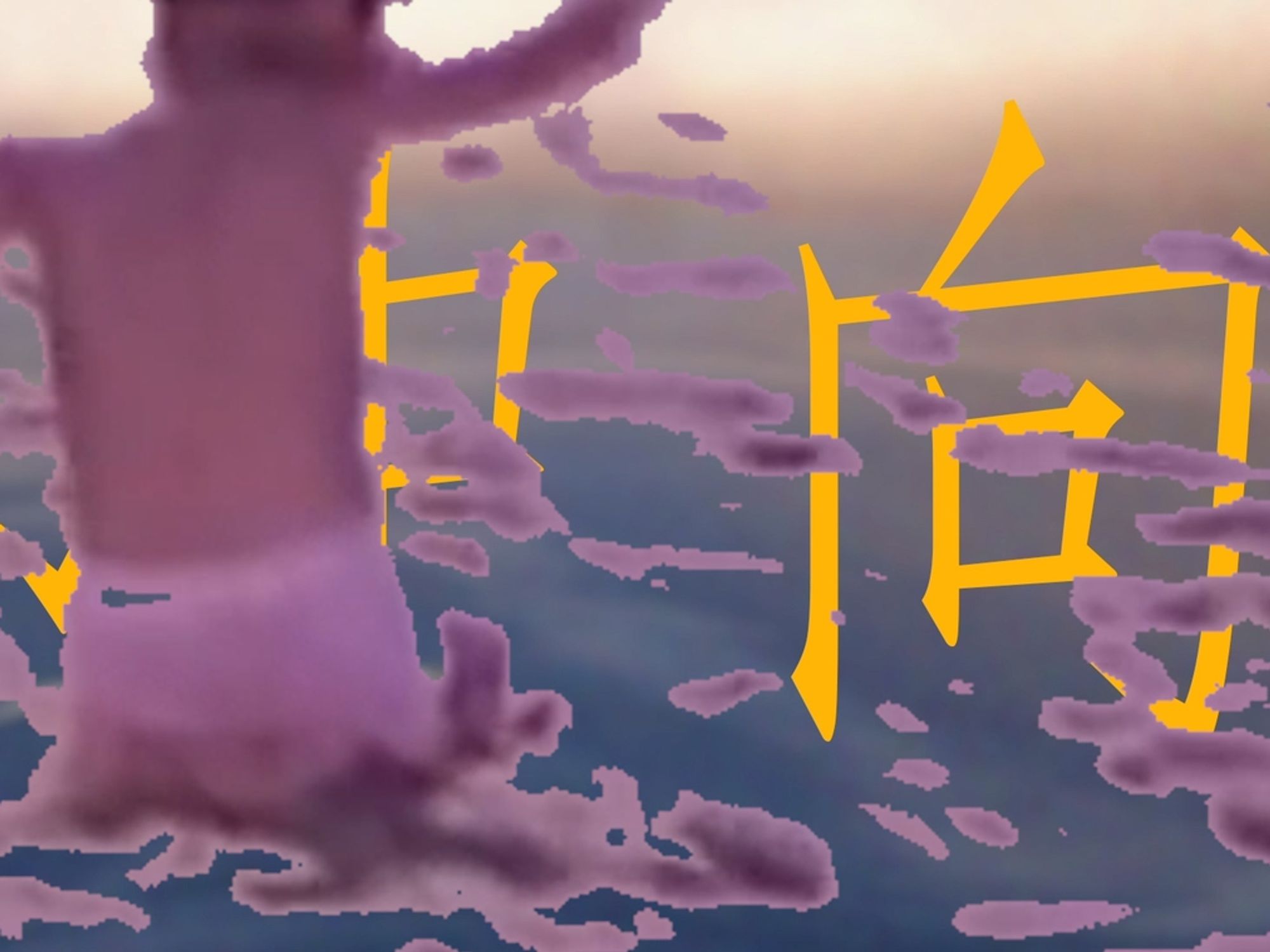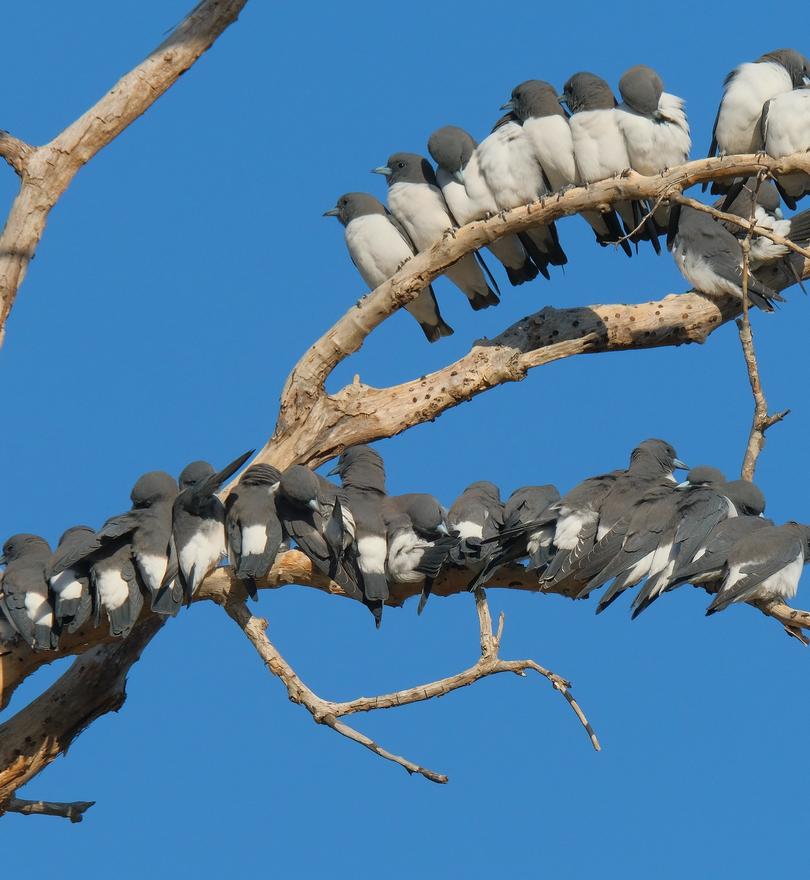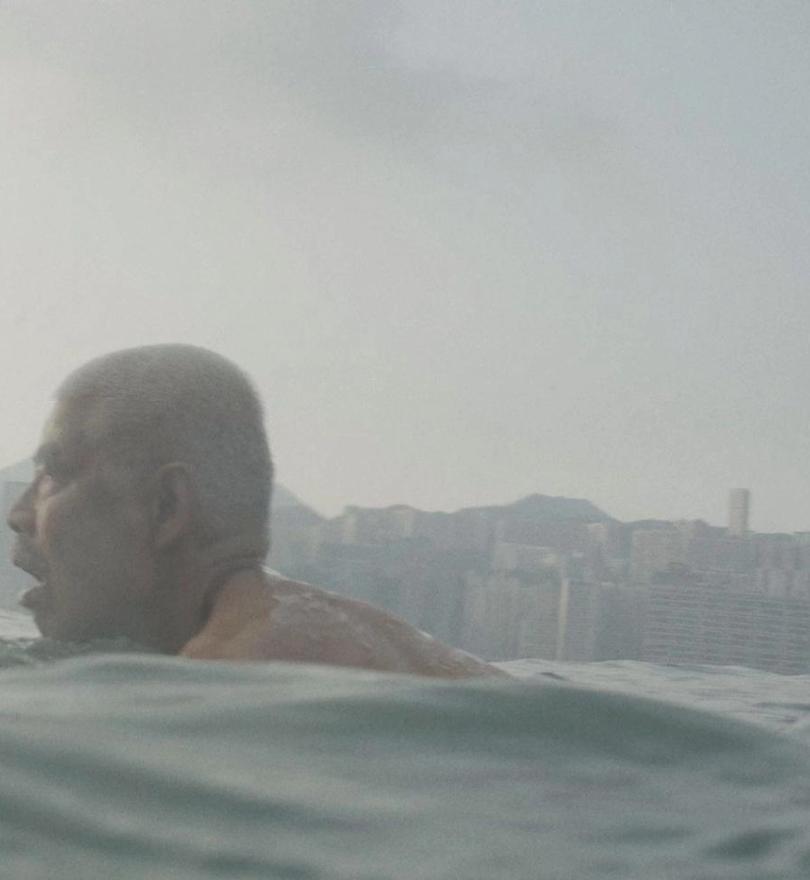
In 2014 Vera Mey left Aotearoa for Southeast Asia, finding herself in a space that is ‘constantly negotiating itself’. Here, Vera recounts how these shifting, transforming contexts shaped not just her practice as a curator, but her worldview, as she found new ways to learn from and work alongside the artists she came to know.
This essay was originally published in 2017 as part of A Year of Conscious Practice.
There is an illustration by Pablo Helguera that demonstrates a common and problematic dynamic of curatorial practice. Unfortunately, it reminds me of moments in my professional experience, particularly when I worked as a curator at the newly established artistic research facility, NTU Centre for Contemporary Art Singapore. My role was to act as an interlocutor for artists, curators and writers, both foreign and local, to enable access into the Southeast Asian art scene. The dynamic in the cartoon is simple: a suited curator is talking to a group of people positioned as signifying “natives” within a “primitive” environment. The caption reads: ‘He says he is curating a biennial and wants to know if anyone here does video.’ After living away from Aotearoa for the past few years while working in various contexts in Southeast Asia, there have been times, more than I care to admit, in which my commitment to this discipline we call ‘the curatorial’ has been questioned. The content of this cartoon was closer to home than felt comfortable. The following are some anecdotes and personal experiences of learning within the context of the curatorial.
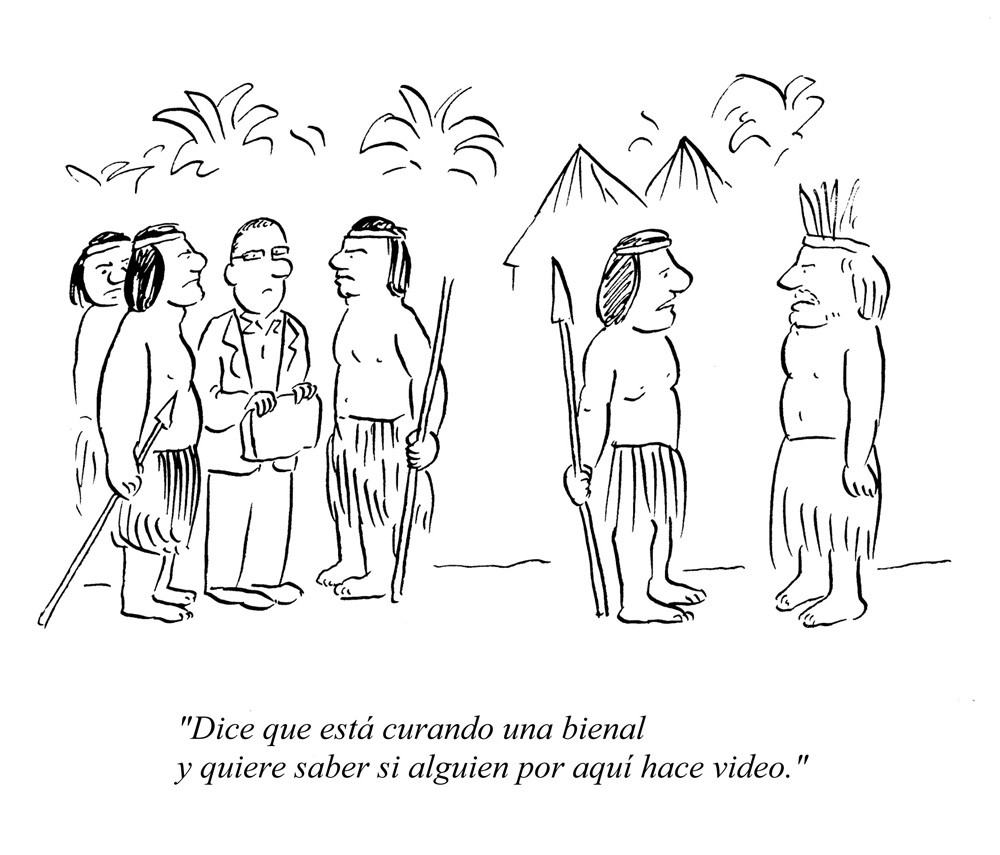
Pablo Helguera, ‘He says he is curating a biennial and wants to know if anyone here does video.’ published in Artoons, 2008
With whakapapa extending to Cambodia and Indonesia, but only having lived and been formally educated in Aotearoa, at the time of my appointment at the NTU Centre for Contemporary Art Singapore I was eager to engage an expanded discussion on the Asian Pacific geo-terrain. The types of engagement at that point in time were still under-discussed within a New Zealand cultural framework. We were aware of the rise of the “Asian century” but still configuring how to be part of it. The current conversation is thankfully progressing, but there is still a distance to go before being conversant in this arena beyond acknowledging a history of Asian diaspora in New Zealand. I was still largely unaware of artists from the region or even key institutions to look to. It can feel as if we are still figuring out where we want to be and with whom, whether that be Berlin, the Pacific or otherwise. My initial desire to locate myself closer to Southeast Asia began in earnest as a way to get closer to my other homes and closer to what I perceived as a context devoid of the longings for a Eurocentric flavour within institutions and artistic canonisation. How were those in Southeast Asia being part of a global art scene whilst remaining firmly located within its own terms?
A close colleague and I were discussing both the constraints and potentials of working in what is too often regarded a “developing” context and the many debatable terms used to (inaccurately) describe the art scene in Southeast Asia. We talked very politically incorrectly about what we deemed the third world curatorial. This space is one that is constantly negotiating itself amongst what Saigon-based curator Zoe Butt would define as an ‘ecology of cultural lack’.1 This ecology is characterised by: a dearth of state (or any) funding; active historical amnesia through destruction of memory — archival, architectural or otherwise; visible and violent impoverishment; and freedom of expression in public existing as a real threat with political ramifications and not just something debated in the comments section of a review. When there is funding available from state sources it is as if biting the hand that feeds — how can we continue to be critical whilst being state endorsed by problematic governance? Due to these constraints, a working methodology of friendship and dependency ensued. Friends relied on each other to help make artworks, to learn things, to build institutions, to get things done. Some examples of this will be further elaborated below.
Friends relied on each other to help make artworks, to learn things, to build institutions, to get things done.
Vietnam-based curator Zoe Butt, who has initiated programmes on alternative routes linking, for example, Senegal to Saigon, mathematicians to a collective of artists, cites the necessary social bonds that are crucial to both artistic production and the ecology of the art world. She also emphasises the patina of time and timing as mechanisms that endure beyond the fickle fashions of contemporary art.2 Again, working within a context where there are severe restrictions on what is publicly permissible within the exhibitionary, dependency on each other and forming a tribe becomes survival. The mythology of the lone artist would not work there. As a caveat to modes of working within or beyond institutions, I observed distinctions between friendships and “networks”; particularly the difference between heavily infrastructured art scenes and necessarily informal ones. Friendships usually have a dynamic that involves a kind of emotional labour without the certainty of a fiscal output. Friendships can be mutually beneficial, complicated, unconditional and unprofessional. Feelings are at stake. To the contrary, a network is a professionalised and formalised system of friendship where professional gains are at stake. Friendship can be built on love for the formation of a commune. Networks depend on professional desires and are a kind of capital. It is this ambiguous grey area where a large portion of curatorial and artistic practice seemed to reside, no matter which context or art scene.
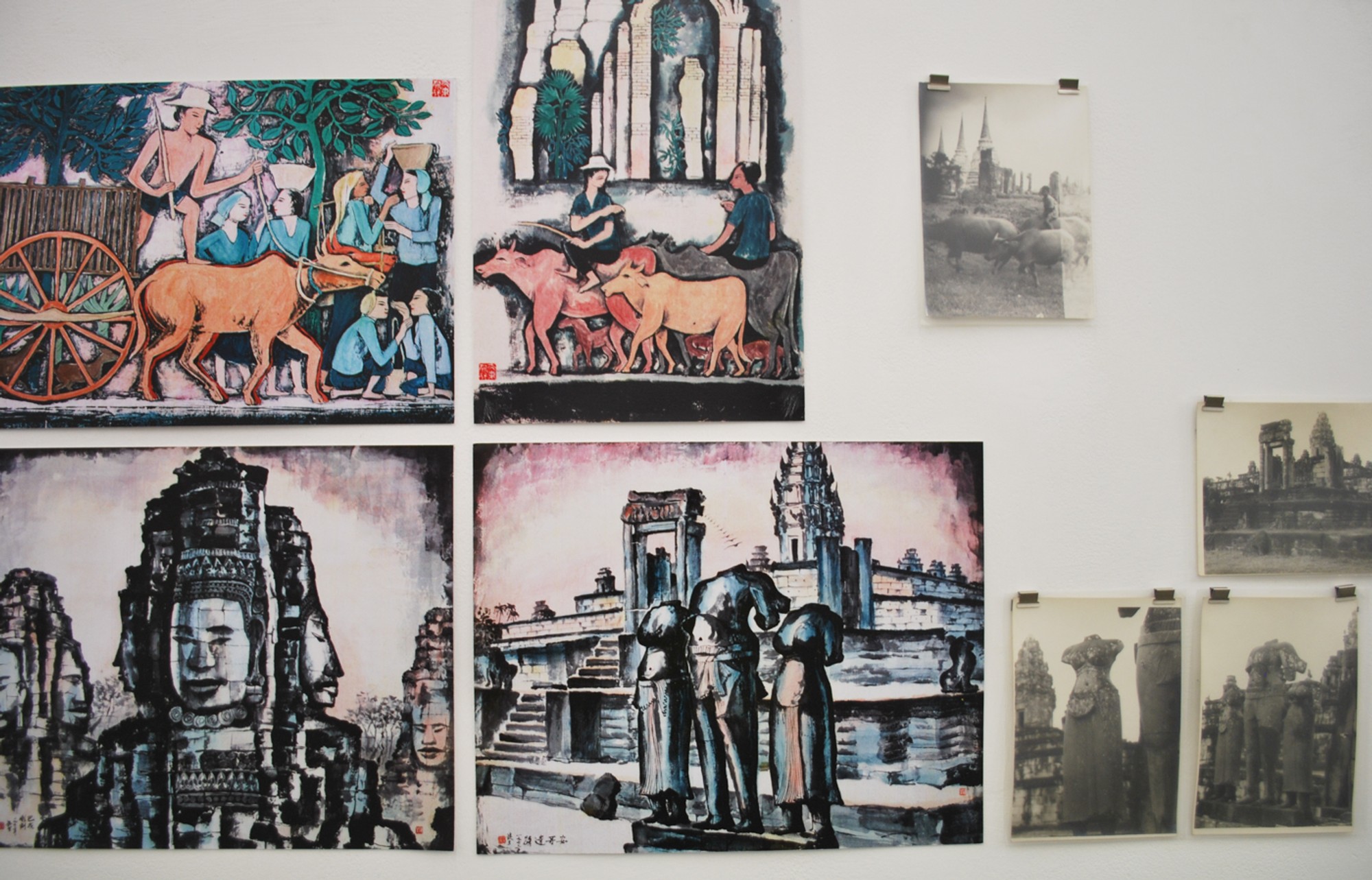
Shui Tit Sing’s photographs of Angkorean temples and a few of the paintings they inspired, exhibited in The Singapore Art Archive Project at Sa Sa Bassac, Phnom Penh, Cambodia, 2016, curated by Vera Mey and Melanie Mermod
Photo by Ben Valentine for Hyperallergic
My short-lived naive position quickly dismantled itself and I became extremely disillusioned. On the one hand this environment was ripe for best curatorial practice; indeed, a substantial amount of funding was prevalent in a context that needed more spotlighting. The art and content was already there — it didn’t need to be found, it just needed further exposure. Over the few years I spent in Singapore, Southeast Asia was constantly referred to as an “emergent” scene. I witnessed the encroaching colonising apparatus of international projects, which aimed, and still aim, for the circulation of globalisation in a world where research is something sandwiched between the arrivals gate and time by the swimming pool. This approach mirrored “discoveries” of “forgotten” artefacts, like the French uncovering of Angkor as if a world had been hiding all along. Despite anxieties around sustainability, the air miles continued to accelerate the situation. The jet-setting, parachuting style of curating the “undiscovered” was prevalent, as well as a fetish for the unknown, particularly in an undecipherable language. The external perception was a dearth in local discussion. The reality was a lack of foreign translation.
Within our contemporary situations of learning we have strayed far from the indebtedness of knowledge to each other, instead thinking that this is easy to download or something we can buy. Instead of owing each other time and wisdom there is an increasing professionalisation of the curatorial through foreign and often expensive programmes. Confidence isn’t solely attained through self-reflexivity or the assurance of a mentor but through the validation of a certificate or an induction by a network. Instead of experimenting, we intern. Instead of trying things out, we formulate and formalise. Algorithms position our interests before we’ve even thought through a political stance. I am surrounded by a news feed of status updates and articles that match my interests before I even know what I’m interested in.
The external perception was a dearth in local discussion. The reality was a lack of foreign translation.
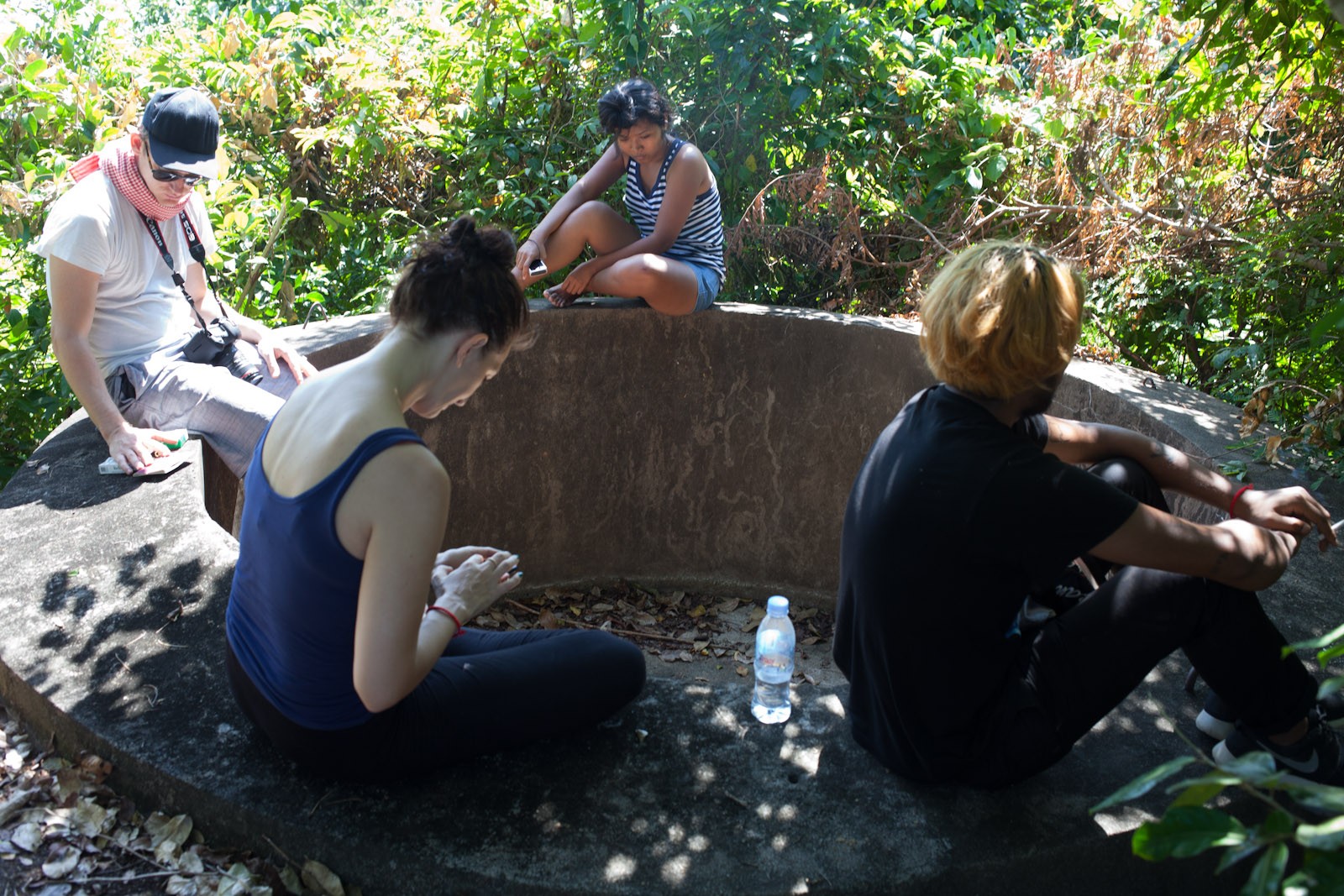
Lim Sokchanlina, FIELDS: An itinerant inquiry across the Kingdom of Cambodia, 2013
Trying to find tools to navigate a new terrain, I realised I was in a place where the alternative becomes the mainstream. With a dearth of institutionalism, what were these spaces alternative to? I encountered a scholar, surprisingly based in Singapore, who introduced me to the concept of the undercommons. As a method of practice on the Black radical tradition, Stefano Harney and Fred Moten describe the action of study as positioned within the undercommons.3 Jack Halberstam describes this space of activity as ‘a wild place that is not simply the left over space that limns real and regulated zones of polite society; rather, it is a wild place that continuously produces its own unregulated wildness.’ He further elaborates that ‘the undercommons is space and time which is always here. Our goal — and the “we” is always the right mode of address here — is not to end the troubles but to end the world that created those particular troubles as the ones that must be opposed.’4 It is a plea for space within and beyond institutions, using the language of the oppressor whilst also trying to subvert and dismantle it. Learning from each other through the concept of debt and indebtedness, the undercommons is a place to empower the sharing and building of ideas with the caveat that with the acquisition of knowledge comes great responsibility. Harney and Moten describe the action of study as a form of organising and socialisation. On study, Moten says that:
we were committed to the idea that study is what you do with other people. It’s talking and walking around with other people, working, dancing, suffering, some irreducible convergence of all three, held under the name of speculative practice … The point of calling it ‘study’ is to mark that the incessant and irreversible intellectuality of these activities was already there.5
Learning from each other through the concept of debt and indebtedness...
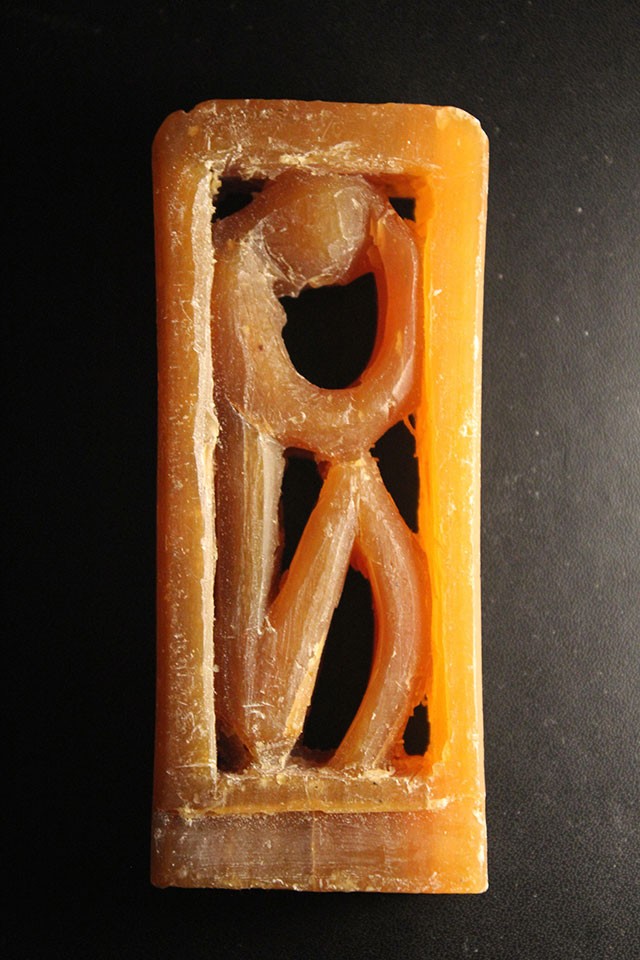
Htien Lin, Soap Blocked, 2016
Within the scope of my job in Singapore, initially there was a huge sense of fulfilment working on curatorial research without being strapped to the self-conscious treadmill of shows and its corresponding careerism. The tactic of remaining intimate, through proximity to artists and their context, whilst simultaneously masquerading as invisible through avoiding obvious outputs like the production of exhibitions bore a romantic quality. We learned a codified language to escape the censoring eyes of culturally policing local authorities; there resounded a sentiment somewhat righteous in its appeal. It was not uncommon to return to the studio for the first encounter of a finished artwork rather than through exhibitions. We heard about work being made in secret, such as Htein Lin’s sculptures of soap carved during his time in prison in martial-law Myanmar, or having to cross borders to view films by Singapore filmmaker Tan Pin Pin or Thai artist Apichatpong Weerasethakul because their home countries remained inhospitable to their politically poignant content. The proviso of burn after reading was metaphorically real. Everything here felt like it mattered more.
After my arrival in Singapore I became more interested in the traditions of knowledge sharing within Southeast Asia beyond university accreditation. How were people learning about contemporary art and where? I sought out systems of learning in a context with a healthy dose of distrust towards authoritarian structures. It seemed that as education was accelerating in formality through the growth of degree courses, there was an erosion of intergenerational dialogue. It is no longer uncommon that there is no shared language between grandparents and their children. Although seemingly outside the confines of the curatorial, these experiences touch on situations of encounter and exchange that form our sense of perspective and are crucial to the curatorial toolbox.
What does this mean for curating self-consciously? In particular, what does this mean in Southeast Asia, where the artistic lingua franca goes beyond the practice of exhibition making and beyond the language of the gallery or museum? There were many instances where it physically bypassed this sphere altogether. Presentations of artwork were held in festivals, on rooftops or often never left the studio due to a dearth of institutions in which to exhibit work. Archives were often in inadequate conditions, accessible only through the mercy of a lone government worker, or they resided underneath beds or in Tupperware. The stance of the curatorial is where knowledge can be hosted and transmitted, which can be anything ranging from the drag bar, genocide museum or the pagoda. Within these different spaces were also different stakes.
How were people learning about contemporary art and where?
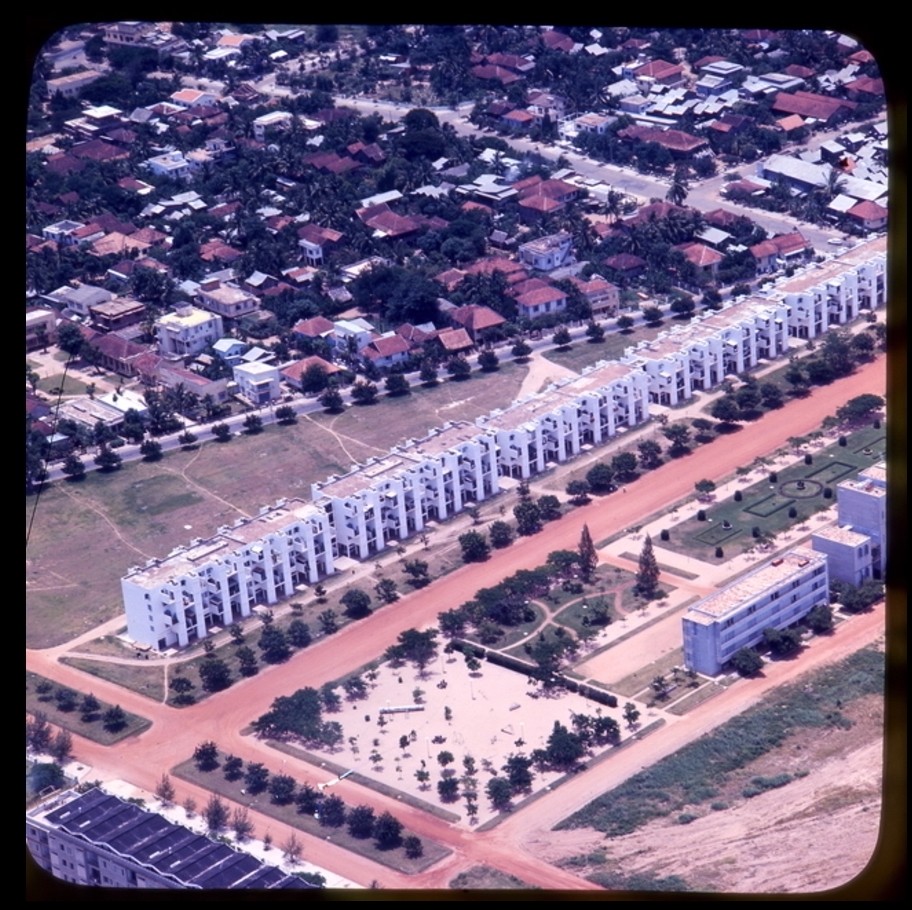
The White Building in Phnom Penh, photographed around the time of its inauguration in 1963. National Archives of Cambodia
On thinking about different modes of being and learning from each other, I visited Sa Sa Art Projects in Phnom Penh, Cambodia, and was intrigued to learn that it was founded by a group of four artists who initially met on a year-long photography workshop. They formed the collective ‘Stiev Selapak’, which loosely translates as art rebels. From diverse backgrounds, including working for NGOs or print journalism outlets, they founded a space in a historic residential block known as the White Building. Their mandate was to cultivate local audiences in the wake of NGO culture and foreign ownership of artistic spaces — as well as a dearth in art education. The White Building’s legacy harks back to the Golden Era of the 1960s in Phnom Penh, a time when the arts — including architecture, cinema, dance, music and the visual arts — grew substantially, partially due to state policy. The White Building was a government initiative once dedicated to housing artists and public servants. Currently, post Khmer Rouge, it is known as a low-income housing area. Guiding their own practice is the sentiment that ‘empathy is central in the work of the four artists’,6 a value that is hard to teach and formalise.
Sa Sa Art Projects’ philosophy was embedded within a notion of continuing to learn together rather than the school being a means to an end. When one member of the collective attains new knowledge there is an energetic impetus that it becomes everybody’s knowledge. Despite limitations of funding, they offer experimental art workshops and a residency programme for visiting artists. Classes allow for close proximity to one of the artists in the collective, following a master model style, like a mentorship. The hosting of screenings and experimental events have ranged from an artists’ video programme within the neighbourhood café to visiting sound artist, Yan Jun, conducting a performance hypnotising visitors on the rooftop at sunset. It is fascinating that the group bears the weight of passing knowledge on to further generations. In a charged political public environment, the insistence that ‘art is freedom’ through the alternative education and social forum they provide is crucial to the survival of an artistic continuity.7 This is sustained through a modus operandi of responsibility that is shared amongst the collective.8
When one member of the collective attains new knowledge there is an energetic impetus that it becomes everybody’s knowledge.
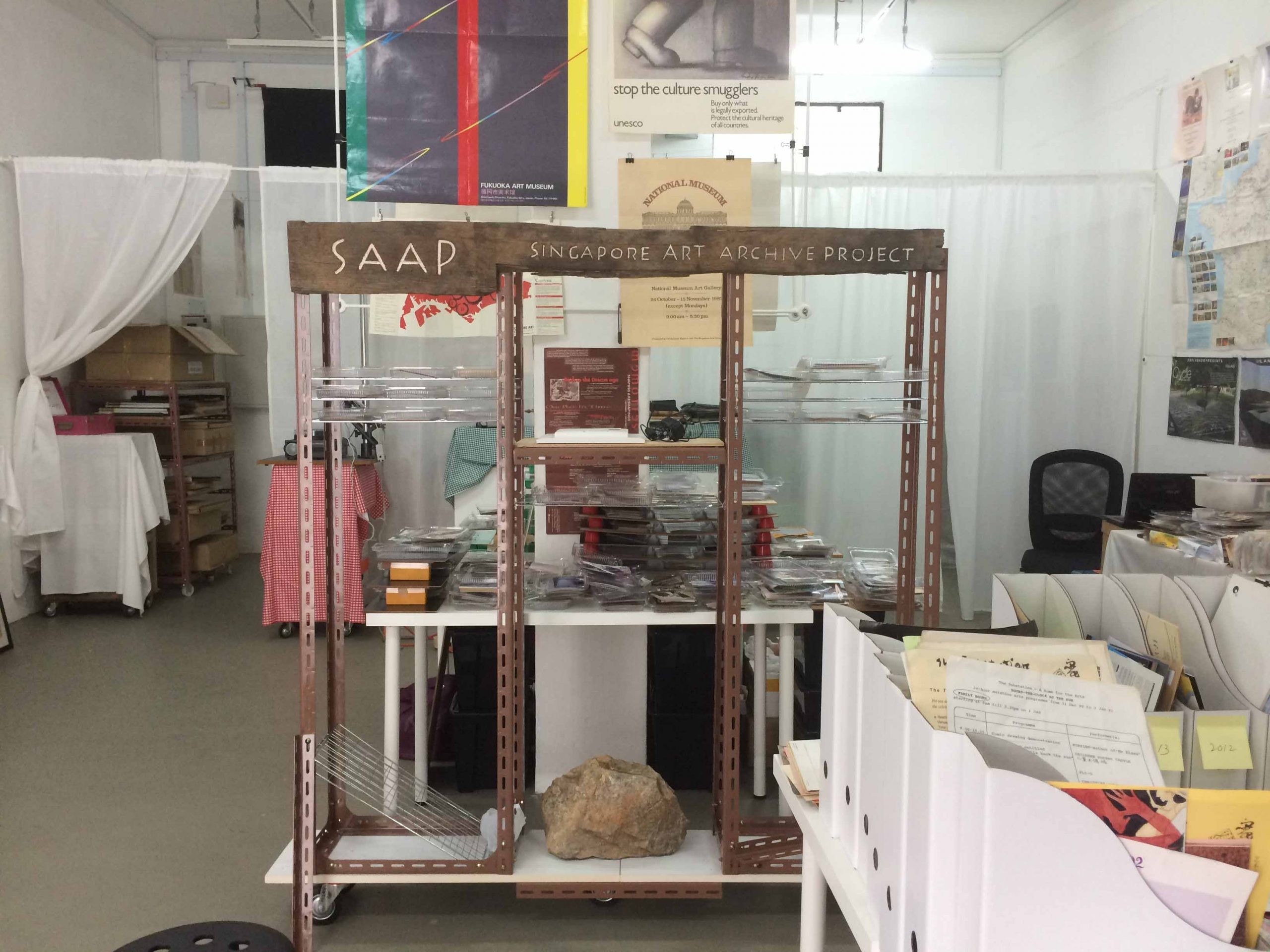
Koh Nguang How, Singapore Art Archive Project residency at NTU CCA Singapore, 1 July 2014–31 January 2015
Photo by Koh Nguang How
Another initiative I encountered was Forum Lenteng in Jakarta, Indonesia, one of the world’s most populous and hectic cities. As a response to the restrictive regulation of Indonesian media, artist Otty Widasari, along with a collective of cultural producers, established Forum Lenteng, prior to the Reformasi movement. During this time foreign media were obstructed from reporting on socio-political issues, heavily affecting information and bias the public had access to. Positioned as focused on cultural studies for the sake of ‘media literacy’ and ‘citizen journalism’, their programme AKUMASSA (I’m the mass) utilises video, photography, images, texts and collaborative-participatory practices to introduce self-recording techniques to communities, revealing not only the generative form of documentation itself but also what relationships these communities have to the camera when these tools are introduced. The act of distribution and circulation is key, and here the notion of study is focused on the person-to-person exchange rather than an over-reliance on infrastructure such as translations of texts — allowing the empowerment of knowledge to be locally based and generated.
My initial education on Southeast Asian art history was not through the formality of the university but rather through my friendship with artist Koh Nguang How, who was a year-long artist in residence at the NTU CCA Singapore. Mr Koh introduced me to a perspective on the region that was a useful counterpoint to institutionalised discourse. His Singapore Art Archive Project is a non-institutional archive that rivals those housed in institutions and whose content begins in the 1930s and focuses on physical material up until the point of extensive reliance on the internet for documentation. His archive was initiated during a time where histories are simultaneously being built and contested by state discourses. Particular focus is given to The Artists’ Village, a group active in the late 1980s to 1990s and known for their radical progression of performance art until the crackdown on this medium from local government. The physical and interpersonal experience of trawling his archive, from rummaging through stacks of slides or ephemera to talking through each piece with Mr Koh, allowed for the accident of encounter with material; a serendipity unimaginable in the age of internet research. His insistence that historical publications are not always trustworthy is cause for reflection on the role of the storyteller within this passing on of knowledge. This was art history as told by an artist.
... the accident of encounter with material; a serendipity unimaginable in the age of internet research.
My final reflection comes from a local experience of learning, a place where I cut my teeth and where I held my first professional appointment: ST PAUL St Gallery, Tāmaki Makaurau. Over my time there, under the guidance and leadership of the gallery director, Charlotte Huddleston, the institution’s mission morphed to align with the New Zealand Education Act (1989), so that they ‘accept a role as critic and conscience of society’. Under Charlotte’s leadership the gallery has become a site for the acquisition of learning and many nodes of unlearning and relearning. This has included inviting artists’ collective Local Time to “camp” on site and hosting annual curatorial symposia, which over the past few years have consciously branched out to include voices from tangata whenua, Asia, the Pacific and formats have incorporated noho marae stays. It is this responsibility in listening to a context that has seen the programme dedicated to that very notion of study that Harney and Moten advocate; getting together with those you trust and figuring out what needs to be learned. During my time learning from Charlotte we made this manifest through listening and disrupting our bodies and formats.
From travelling through material as embedded as the fibre-optic cables of Skype to plan with colleagues, to the ecologically dependent waves of a boat on a village which flooded for half the year in provincial Cambodia on the month-long nomadic residency FIELDS (2013), this project simply changed my life. This nomadic residency saw a group of artists, curators and researchers travel to the highlands along the Vietnamese border to a floating village on the world’s only river to annually reverse its course. Unlike Pablo Helguera’s cartoon, we gave up looking for a specific something or even anything. At the residency’s culmination we also let go of the desire to produce, let alone respond through the lens of contemporary art. Even though the curatorial eye can panoptically encompass anything and everything and the demands of funding wanted a tangible output, it was necessary to learn and leave things alone.
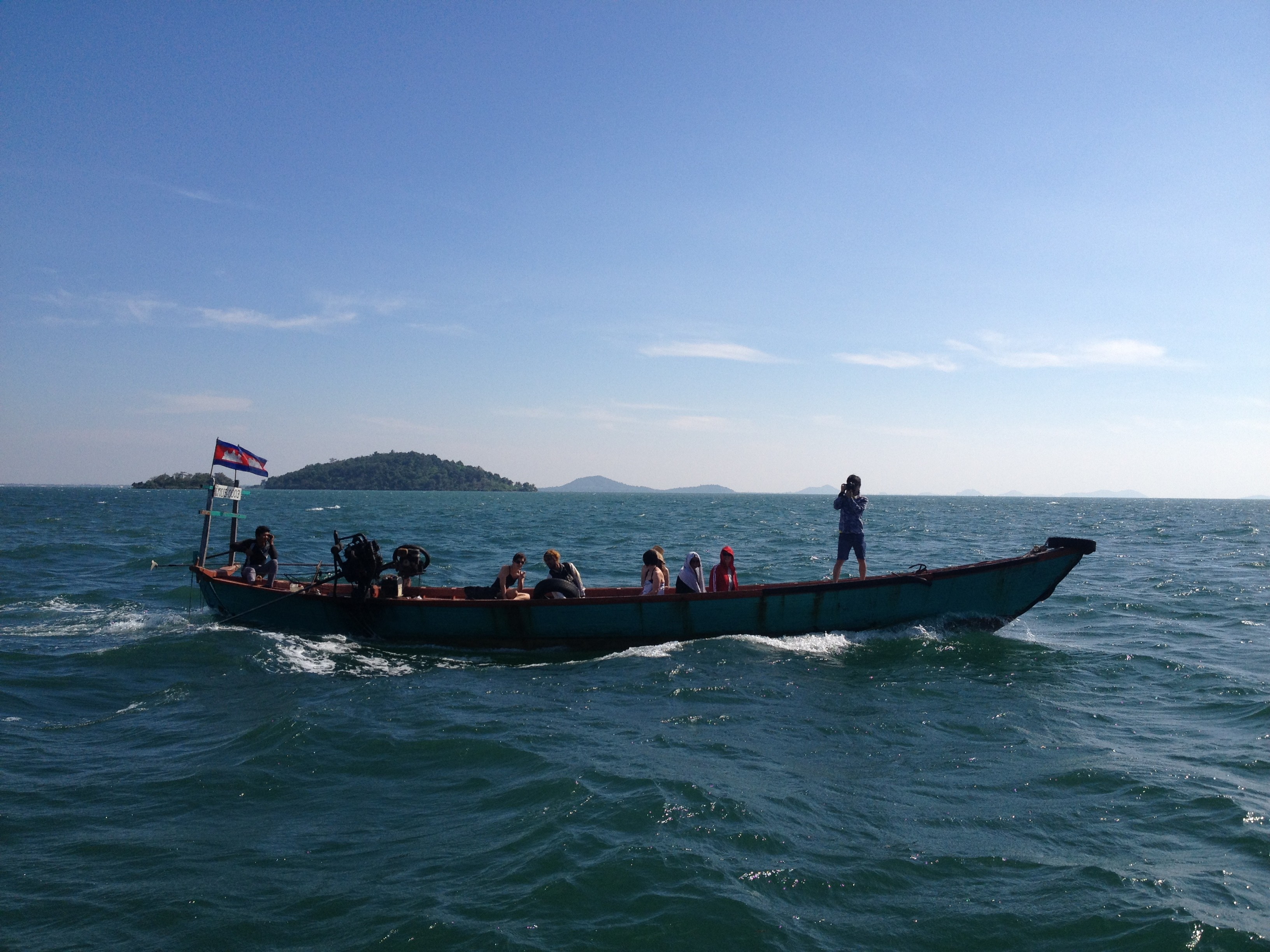
Lim Sokchanlina, FIELDS: An itinerant inquiry across the Kingdom of Cambodia, 2013
Despite the theoretical reasons to continue and the impetus to respond to urgencies, the main motivation to keep working was the privilege in understanding how practice is ultimately shaped by the worldview of a person. Charlotte’s generosity in spirit as a person and a colleague were inspiring lessons on how to treat others and a methodology of practice that is more enriching than beginnings and ends of a project and outlasts the professional shelf life. Rather than working on things for the sake of a line on a curriculum vitae, let’s keep working at this for each other. Ironically and perhaps predictably, I needed to leave to form and further my tribe, only to find out that the people who were there to talk with, to see things with, to study with, were around me all along.


